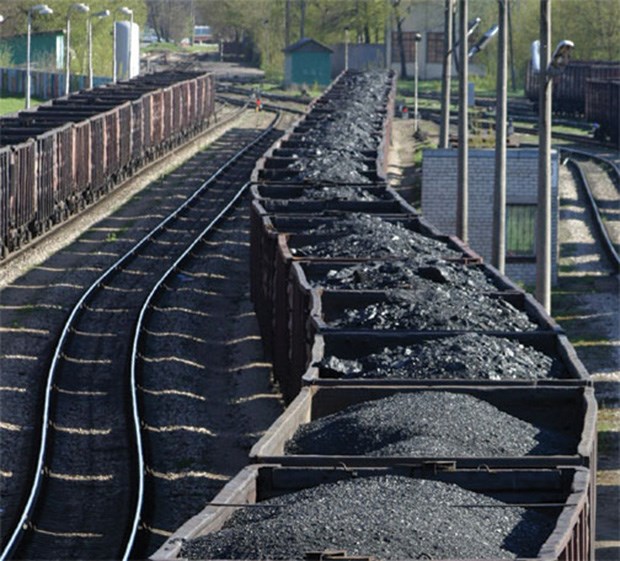The business of exporting coal and its potential effects on communities and environment along rail and shipping routes will be front and centre at a town hall-style meeting in Steveston Thursday night.
It’s a subject that has been pressing on Erika Koenig-Workman’s mind for a while.
She’s watched as a proposal has moved ahead to use Surrey Fraser Docks — across from south eastern tip of Annacis Island — as a transfer point for coal mined in the Powder Basin area of Wyoming and Montana.
The coal will be transported by rail to Surrey, barged along the Fraser River’s south arm past Steveston to a secondary transfer facility on Texada Island, then shipped in deep sea tankers to markets in China.
The potential fallout from coal dust is what prompted Koenig-Workman, a Steveston resident, to organize Thursday’s two-hour long gathering at the Steveston Community Centre called the Richmond Coal Awareness Town Hall Meeting.
“It’s disconcerting to know that this may be something my children will have to deal with when they are adults,” said the mother of three young boys.
“There just seems to be a lot of changes coming to the Lower Mainland all at once, what with possible shifts in the ALR, the jet fuel shipping proposal, and now coal shipments.”
Surrey Fraser Docks submitted a project permit application in 2012 to Port Metro Vancouver to develop a coal transfer facility that would initially handle up to four million metric tonnes annually.
The proposal is to initially ship coal down the river in 284-foot-long by 72-foot-wide barges roughly once a day — 320 trips during the first year.
In years two to five, the number of trips down the river is planned to double to 640. Year six would see it double again to 1,280 trips, moving eight million tonnes of coal.
Each trip would be made by one barge pulled by a tug.
One of those opposing the plan is Dr. Frank James, a medical health officer for Washington State’s San Juan County and professor of public health at the University of Washington.
A video of James will be shown at Thursday’s meeting, along with presentations by Stephanie Smith from the group Communities and Coal, and aquatic ecologist Otto Langer.
In James’ presentation at Ocean Park Community Hall in south Surrey this June, he painted a grim picture of what potential impact a rise in coal rail traffic would have on adjacent communities.
James told the audience that coal dust blowing off additional trains a day rolling through the region would be a major factor in a number of diseases, including cancer, strokes and heart attacks.
Plus, sustained train noise can impair cognitive ability in children and contribute to cardiac arrhythmia (irregular heartbeats) in seniors.
But it’s not just the coal dust the public should be worried about, he added. The diesel particulate from the locomotives — six in total driving trains running about 2.5 kilometres long (1.6 miles) — is the equivalent of establishing a major freeway along the rail route.
Then there’s the diesel particulate emanating from the waiting ships transporting the coal, and the equipment at the coal-handling facility.
James said the size of diesel particulates — about 2.5 microns — is small enough to travel deep into a person’s respiratory system.
He also pointed to the negative effects coal dust can have on the environment, most noticeably the impact on eel grass, which is used by herring to lay their eggs.
A fine layer of coal dust on the water can screen out sunlight and reduce the growth of herring-bearing eel grass, causing a detrimental effect on the food chain starting with salmon feeding on herring, and then orcas who feed on salmon.
What James is calling for is an independent environmental assessment so the public can make an objective decision on where they stand on the issue.
Koenig-Workman said the intent of the evening is not to bash Port Metro Vancouver, which serves as both the regulatory body and landlord in the proposal. (The dual role has many concerned about a conflict of interest.)
Rather, the meeting is designed to “stimulate discussion on a matter that’s important to the health of people,” she said, ahead of the Dec. 17 deadline for public input on an Environmental Impact Assessment (EIA) conducted by Fraser Surrey Docks.
Once the guest speakers are done, the audience will have an opportunity to ask questions.
Thursday night’s town hall meeting starts at 7 p.m. inside the Steveston Community Centre (4111 Moncton Street).



